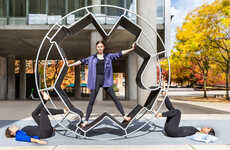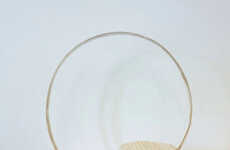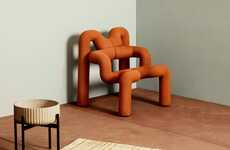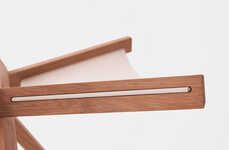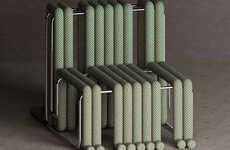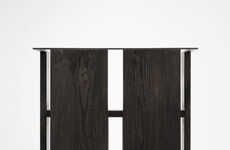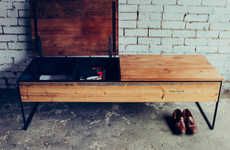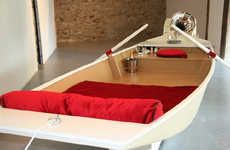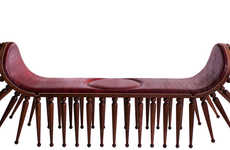
Robert van Embricqs' Rising Chair is Both Organic and Modern
Meghan Young — April 27, 2011 — Art & Design
References: robertarchitecture.blogspot & contemporist
Chairs come in a range of shape, sizes and styles, creating a unique spectrum of seats that can sometimes boggle the mind; the Rising Chair is one of those mind-boggling creations. Stunningly intricate, it looks more like an art piece than a piece of furniture.
Created by Dutch designer Robert van Embricqs, the Rising Chair was made with a single, fundamental question in mind, "To what degree is the object you’re creating capable of dictating its own design?" The Rising Chair is clearly the answer to this question. Basically, it can.
With beam-like wood strands, the Rising Chair was born out of a grid-like pattern that blossomed into what seems like a colorful flower petal. The material and the designer worked together to create its organic and modern aesthetic.
Created by Dutch designer Robert van Embricqs, the Rising Chair was made with a single, fundamental question in mind, "To what degree is the object you’re creating capable of dictating its own design?" The Rising Chair is clearly the answer to this question. Basically, it can.
With beam-like wood strands, the Rising Chair was born out of a grid-like pattern that blossomed into what seems like a colorful flower petal. The material and the designer worked together to create its organic and modern aesthetic.
Trend Themes
1. Organic Furniture Design - Furniture designers may explore ways of creating furniture with more organic and natural shapes and textures, blurring the line between art and function.
2. Self-designing Objects - Other designers can explore the concept of creating objects that have some degree of autonomy in their design or function.
3. Intricate Furniture Crafts - Furniture craftsmen may experiment with intricate designs and patterns made of wood or other materials that push boundaries of what is currently considered possible or conventional.
Industry Implications
1. Furniture Design - This trend may present opportunities for furniture designers as it can inspire them to create more original, complex, and eye-catching designs.
2. Interior Design - Interior designers may seek to incorporate more organic-shaped furniture pieces that could add visual interest and create a more inviting environment.
3. Architecture - Architects can potentially use the idea of organic furniture in their designs, creating more harmonious and natural spaces that are in tune with their environment.
3.7
Score
Popularity
Activity
Freshness


